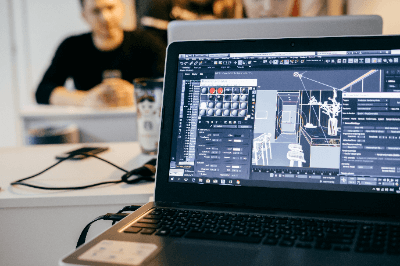What Is 3D Modeling?
 3D modeling is a technique in computer graphics to create a three-dimensional representation of an object or surface. Modelers use specialized software to manipulate points in virtual space, known as vertices, forming a mesh that shapes the 3D object. These models can be generated either automatically or manually by deforming the mesh. 3D reconstructions can also be created from medical CT images, allowing for detailed cross-sectional views and color-coded organ representation.
3D modeling is a technique in computer graphics to create a three-dimensional representation of an object or surface. Modelers use specialized software to manipulate points in virtual space, known as vertices, forming a mesh that shapes the 3D object. These models can be generated either automatically or manually by deforming the mesh. 3D reconstructions can also be created from medical CT images, allowing for detailed cross-sectional views and color-coded organ representation.
Uses of 3D Modeling
3D models are widely used in various media, including video games, films, architecture, engineering, and advertising. The modeling process typically starts with basic geometric shapes and progresses to complex, accurate digital representations. 3D modeling is crucial in character animation and special effects, offering digital objects that can be animated.
Principles of 3D Modeling
Modeling involves connecting points to create surfaces, which are then joined to form volumetric objects. The core of a model is the mesh, represented as a collection of points in space. Vertices are joined as polygonal shapes, usually triangles or squares, each with a specific position on a 3D grid. The object’s surface is generated by connecting these points. Models can be exported to other software for use in games or movies, with rendering techniques creating realistic scenes.
Equipment Needed for 3D Modeling
3D modeling requires a high-spec PC with a robust CPU, GPU, and ample memory. A powerful CPU is necessary for fast modeling and video encoding, while a high-end GPU handles model shading and color processing. At least 8GB of memory is recommended, preferably 16GB or more. The choice of CG software depends on individual needs, ranging from specialized modeling software for beginners to all-in-one products covering both modeling and animation.
3D Modeling Bones
Bones are essential in animating 3D models, acting as movable points within the model. They are interconnected, allowing for natural movement when one bone is manipulated. This connectivity enables the expression of realistic movements without manipulating every point, simplifying animation creation. Bones are typically placed at the model’s center or at joint-like positions for natural movement.